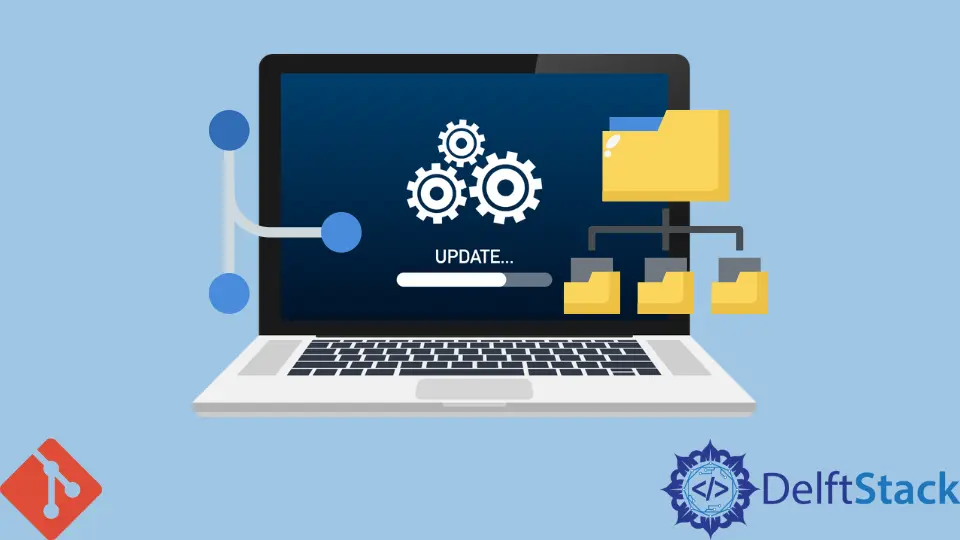How to Update a Forked Repository
- Understanding Forked Repositories
- Method 1: Syncing with Upstream Repository Using Git Commands
- Method 2: Rebase Your Forked Repository
- Method 3: Using GitHub Interface to Update Your Fork
- Conclusion
- FAQ

Updating a forked repository is an essential skill for any developer looking to keep their work aligned with the original project. Whether you’re contributing to an open-source project or maintaining a personal fork, ensuring your repository is up-to-date is crucial for avoiding conflicts and ensuring compatibility.
In this tutorial, we’ll walk through the process of updating a forked repository on Git step-by-step. By the end, you’ll have a solid understanding of how to sync your fork with the upstream repository, making collaboration smoother and more efficient. Let’s dive into the methods you can use to keep your fork current and ready for development.
Understanding Forked Repositories
Before we get into the nitty-gritty of updating a forked repository, it’s important to understand what a forked repository is. When you fork a project on platforms like GitHub, you create a personal copy of that repository. This allows you to experiment with changes without affecting the original project. However, as the original repository evolves, your fork can become outdated. Therefore, knowing how to update your fork is essential for maintaining its relevance and functionality.
Method 1: Syncing with Upstream Repository Using Git Commands
One of the most straightforward methods for updating a forked repository is to sync it with the upstream repository using Git commands. This method allows you to pull in the latest changes from the original repository directly into your fork.
First, you need to configure the upstream repository. This is the original repository from which you forked. Use the following command:
git remote add upstream https://github.com/ORIGINAL_OWNER/ORIGINAL_REPOSITORY.git
Replace ORIGINAL_OWNER and ORIGINAL_REPOSITORY with the appropriate values.
Next, fetch the latest changes from the upstream repository:
git fetch upstream
Now, you can merge those changes into your local branch. If you’re on the main branch, use:
git checkout main
git merge upstream/main
Finally, push the updated changes to your forked repository:
git push origin main
Output:
To github.com:YOUR_USERNAME/YOUR_FORK.git
abcdefg..hijklmn main -> main
This method ensures that your forked repository is in sync with the upstream repository, incorporating all the latest features and bug fixes. It’s a simple yet effective way to keep your work aligned with ongoing project developments.
Method 2: Rebase Your Forked Repository
Another effective way to update a forked repository is by using the rebase command. This method is particularly useful if you want to maintain a cleaner project history. Rebasing allows you to apply your changes on top of the latest changes from the upstream repository.
Start by adding the upstream repository if you haven’t done so already:
git remote add upstream https://github.com/ORIGINAL_OWNER/ORIGINAL_REPOSITORY.git
Next, fetch the latest changes:
git fetch upstream
Now, switch to your local branch (e.g., main):
git checkout main
To rebase your changes on top of the upstream changes, use:
git rebase upstream/main
If there are any conflicts during the rebase, Git will pause and allow you to resolve them. After resolving any conflicts, continue the rebase with:
git rebase --continue
Once the rebase is complete, push your changes back to your fork:
git push origin main --force
Output:
To github.com:YOUR_USERNAME/YOUR_FORK.git
+ abcdefg...hijklmn main -> main (forced update)
Rebasing is a powerful way to keep your forked repository updated while maintaining a clean commit history. Just remember that rebasing rewrites commit history, so use it with caution, especially if you’re collaborating with others on the same branch.
Method 3: Using GitHub Interface to Update Your Fork
If you prefer a graphical interface, GitHub offers a user-friendly way to update your forked repository. This method is great for those who are not as comfortable with command-line tools.
- Go to your forked repository on GitHub.
- Click on the “Fetch upstream” button. This button usually appears if there are changes in the upstream repository.
- After clicking, you will see an option to “Fetch and merge.” Click on it.
- GitHub will automatically merge the upstream changes into your fork.
Output:
Your fork has been updated with the latest changes from the original repository.
Using the GitHub interface is a quick and easy way to update your fork, especially for users who prefer not to use the command line. It’s also a good option for those who want to avoid potential merge conflicts that can arise when using command-line tools.
Conclusion
Keeping your forked repository updated is a crucial aspect of working with Git, especially in collaborative environments. Whether you choose to sync with the upstream repository using command-line Git commands, rebase for a cleaner history, or utilize the GitHub interface for simplicity, each method has its advantages. By regularly updating your fork, you ensure that your work remains relevant and compatible with the latest changes in the original project. Embrace these techniques to enhance your Git skills and make your contributions more effective.
FAQ
- What is a forked repository?
A forked repository is a personal copy of another user’s repository, allowing you to experiment and make changes without affecting the original project.
-
Why should I update my forked repository?
Updating your fork helps you stay in sync with the original project, avoiding conflicts and ensuring compatibility with the latest changes. -
What is the difference between merging and rebasing?
Merging combines changes from two branches, creating a new commit, while rebasing applies your changes on top of another branch, maintaining a linear history. -
Can I update my forked repository without using the command line?
Yes, you can use the GitHub interface to fetch and merge changes from the upstream repository. -
What should I do if I encounter merge conflicts?
If you encounter merge conflicts, Git will prompt you to resolve them. You can manually edit the conflicting files and then continue the merge or rebase process.